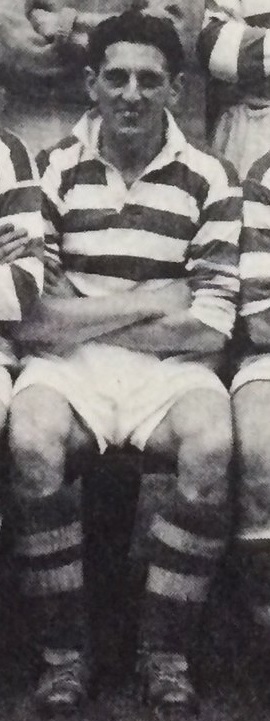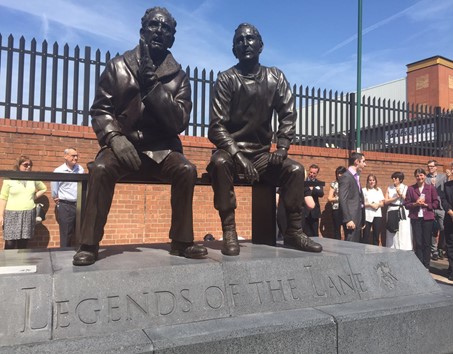According to Jackie Watters (Celtic player of the WWII period), Jimmy Sirrel first played for Celtic in a reserve match on 26 August 1944. That game took place at Cathkin Park against a Third Lanark second string and also featured Bobby Evans. Thereafter, Sirrel signed full forms for Celtic in December 1945.
Jimmy played for Celtic’s first team on 28 occasions, scoring four goals, between 1945 and 1949. A Glasgow man and Celtic supporter, he showed the typical endeavour of an inside forward from the city. He described his time at Paradise as “Thoroughly enjoyable, particularly the atmosphere and the reception from the supporters when you ran out the tunnel at the start of a game.”
Sirrel took Tommy Kiernan’s place in the side at inside right, thus becoming the penultimate Celt to partner the great Jimmy Delaney. He played in the semi-finals of the Victory Cup against Rangers in June 1946, but was plagued by injury during that period. Indeed, he played a match against Hamilton with a flake fracture of the ankle and suffered consistently with a sciatic nerve.
The club was not in a good place after WWII and narrowly avoided relegation in 1948. Changes were required and Jimmy was released. He joined Bradford PA and had a modest playing career.

In 1965, Sirrel took a job as a trainer at Brentford, before becoming Caretaker Manager in February 1967. Having been awarded the job on a full time basis, Sirrel consolidated Brentford’s position in the fourth division before leading a march towards promotion during his third season in charge. It was at this time, however, that Jimmy was offered the Manager’s job at Notts County.
His first campaign in charge of the Magpies resulted in a seventh placed finish, but the next season County took the league by storm and won the Fourth Division. Life in the third tier was equally as successful for Sirrel and his team, as Notts County missed out on promotion by three points. The pain of coming so close haunted the club at the beginning of 1972/73, but Jimmy turned the team’s fortunes around to secure second placed promotion on the final day.
Jimmy led Notts County to consecutive mid-table finishes in the second division, before departing for Sheffield United in the top tier. The move ended in tears as he was unable to prevent the Blades from being relegated and then could only muster an 11th place finish in the second division. However, he did leave his mark in Sheffield, by designing the club crest which is still in use today.
Sirrel left Sheffield Utd to re-join Notts County in October 1977. His former club were struggling, but he managed to save them from the drop.
Then, after two mediocre seasons, he won Notts County promotion into the highest level of English football for the first time since 1926, finishing the campaign in second spot.

Despite being favourites to get relegated, Sirrel’s County finished in mid-table on their return to the top flight. Howard Wilkinson was then brought in as Head Coach and Sirrel was given a General Manager’s position. The club again stayed up but brought Larry Lloyd in at the helm for the following campaign. He couldn’t avoid relegation. Life didn’t get any easier in the second division for Lloyd as County stared back to back relegations in the face. This prompted his sacking and Jimmy Sirrel was re-appointed as Manager however the damage had been done and he could not avoid the drop.
Against a background of real financial difficulty, Sirrel managed to steady the ship in the third division by leading the club to two consecutive mid-table finishes before retiring in 1987. After leaving Notts County, Sirrel became Chief Scout for Derby.
He was a Meadow Lane legend and was honoured by having a stand named after him at the ground. Then, following his death in 2008, at the age of 86, the Nottinghamshire club erected a statue of Jimmy Sirrel and Jack Wheeler outside of the stadium in 2016.
He may not have achieved much of note at Celtic, but he is an interesting football character, who started his career with the Bhoys.




